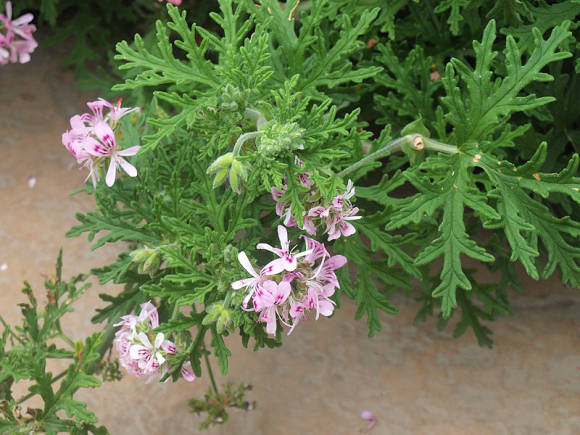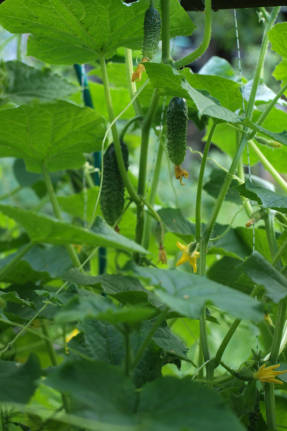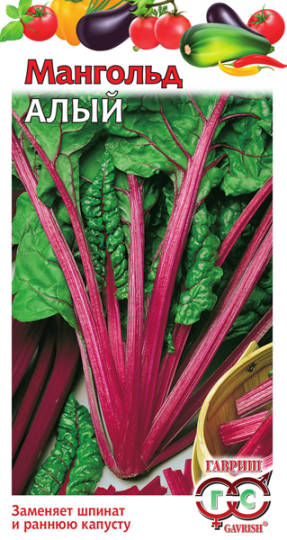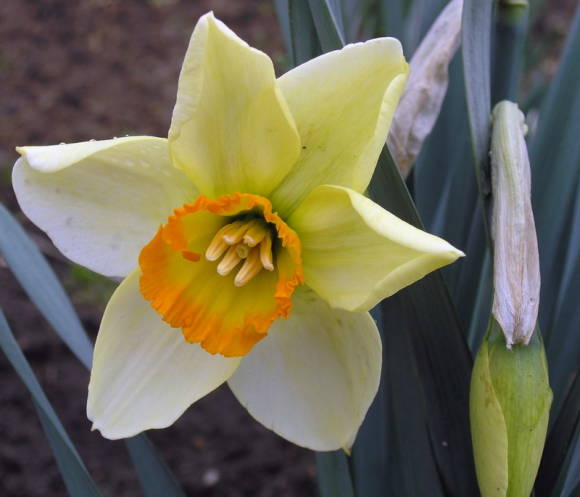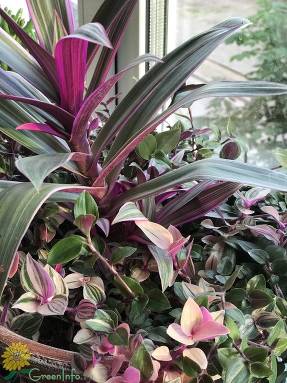
Although Rheo is covered and does not belong to demanding plants, in order for it to be healthy and beautiful, it must be kept in good shape: maintain the correct light regime, water and feed regularly, cut off wilted flowers and leaves in time, shorten overgrown branches, periodically renew the soil. In addition, good drainage is required for the rheo. This plant is resistant to many diseases and pests, so there are no particular difficulties in growing this flower. In general, a beginner in indoor floriculture can easily cope with caring for this plant, if desired.
More about the plant - on the page Reo.
Lighting. For normal development, this plant needs bright diffused light without direct sunlight, therefore, in indoor conditions, it is a resident of western or eastern window sills. Shading is necessary from direct aggressive sunlight to avoid burning the leaves. In dark places, the plant stretches, changes color to a paler one.
Temperature. Favorable temperature conditions: + 22… + 24ºC in summer, + 14… + 17ºC in winter. Reo is able to withstand high temperatures, but absolutely cannot stand low temperatures. For normal plant growth, the indoor temperature should not drop below + 10ºC. With a balcony, it can withstand night temperatures up to + 5 ° C, but the leaves at the same time lose turgor, which leads to the weakening of the plant and its disease. Also undesirable for this species are sudden changes in temperature and drafts.
Air humidity. Higher air humidity is desirable. In extreme heat, it is necessary to spray the rheo with warm filtered water or wash it under the shower. Spraying is carried out carefully, so that splashes of water do not fall on the flowers. In extreme heat, after a warm shower, the plant must be gently tilted and shaken slightly so that the water flows out of the axils of leaves and flowers. Return the flower to its place on the windowsill only when it is completely dry.

Priming. Tradescantia soil should be nutritious, light and loose. From ready-made soil mixtures, it is better to purchase universal ones that contain peat. Or prepare the soil yourself by mixing in equal parts coarse sand, leafy soil, peat, humus and turf soil, to which you need to add a handful of fine charcoal or a few crushed tablets of activated carbon. All ingredients must be mixed very thoroughly.
Transfer. Usually rheo is transplanted once every 2-3 years in the spring, but with the constant rapid growth of the plant, the transplant can be carried out every year. The first transplant is carried out after the plant reaches the age of 2 years. Specimens that have reached the age of 5 years are considered adults; they should be transplanted less often - every 5 years.
Since the root system of this species has the peculiarity of growing not in depth, but in width, low but wide pots with drainage holes are used to grow Tradescantia. It is better to give preference to plastic and porcelain containers, because they retain moisture longer. At the bottom of the vessel, it is necessary to organize a drainage layer 2 cm thick in order to protect the plant roots from decay. The transplant is carried out by the transshipment method. After transplanting, the plant needs watering.
- Soils and soil mixtures for indoor plants
- Transplanting indoor plants
Watering... The soil should not be overdried. During the period of active growth, Tradescantia is watered once every two days. In winter, watering is done less often, but according to the same principle, as soon as the top layer of the substrate in the pot dries up. For irrigation, use settled water at room temperature. To prevent excess water from stagnating in the roots of the plant, the pot should stand on a pallet with pebbles.
Read more in the article Watering rules for indoor plants.
Top dressing. During the growing season - from April to September - the plant needs additional fertilizing - once every two weeks with complex mineral fertilizers for indoor ornamental deciduous plants. From September, fertilizers are applied once a month, and from November they stop feeding completely until the end of March.
Read more in the article Top dressing of indoor plants.
Pruning. Each Rheo variety branches in its own way. In some varieties of this plant, side shoots are formed easily in a natural way, such species do not need to be cut or pinched; it is only necessary to remove the dried lower leaves in time. Other varieties do not branch on their own, so they pinch the top to stimulate the formation of lateral processes.
Reproduction of rheo
Division... At home, rheo is most often propagated by division or cuttings.
Usually an old plant is propagated by division, taking it out of the pot and carefully freeing the roots from the soil. The plant is divided into parts so that they are all approximately the same and each has a sufficient number of roots. Delenki are planted in pots with drainage and substrate.
Cuttings... When grafting with the onset of spring, cut off young shoots from the plant with a clean and disinfected knife, free their lower part from the leaves and keep in soft water until the roots appear. Young shoots are very sensitive to temperature extremes, so it is necessary to keep the temperature in the room where they are located in the range of + 18 ... + 20 ° С. Over time, they will take root, after which they can be looked after as if they were adult plants, transplanted into a new pot. It is necessary to plant a young plant in the soil when the roots have reached a length of 1.5-2 cm.With this method of propagation, the young plant retains all the varietal characteristics of its parent, therefore, flower growers prefer this method of propagation, which, moreover, does not require much effort.
Read more in the article Cutting indoor plants at home.
The most favorable breeding method is considered to be the rooting of lateral shoots. Young growth emerging from the roots of the main plant is carefully separated from the mother plant. If the root system is still insufficient, then it is kept in a vessel with filtered water until full-fledged roots are formed.
Seed propagation... Rheo can multiply by seeds, their germination is very good, they germinate quickly and amicably. Fresh seeds are sown in a peat-sand mixture and watered abundantly. Rheo often reproduces by self-seeding, when the seeds fall out of the scaphoid bracts as they mature. However, with seed reproduction, the varietal qualities of the mother plants are not preserved; instead of a particularly decorative variety of variegated rheo, a plant of the main species can grow.

Diseases and pests of rheo
Tradescantia is resistant to various diseases and parasites. But it can get sick with gray mold or powdery mildew if you do not follow the watering regime and the soil moisture is too high.
Gray rot affects the plant most often as a result of over-watering and lack of drainage. To get rid of gray mold, you need to dry the soil in the pot and reduce water consumption when watering. Usually, for this, the plant is removed from the pot in order to examine its roots and remove rotten areas, after which the root system is treated with a fungicide solution, the flower is transplanted into a new, disinfected substrate. In the future, it is necessary to observe moderation when watering. The plant should be placed on a pallet with pebbles so that excess water can flow freely from the pot.
If, when spraying, water gets into the leaf axils and stagnates there, the plant can get sick with powdery mildew. Powdery mildew is easy to diagnose: whitish scruffy spots appear on the leaves, which gradually darken.For treatment, it is necessary to cut off all damaged leaves and 2-3 times with an interval of 7-10 days to treat the plant and soil in a pot with a fungicide solution.
In rare cases, Tradescantia vermicellate is affected by the scabbard. Wash off the sticky plaque from the scale with a soapy sponge, then rinse the plant under the shower, well protecting the soil in the pot with a film. It is better to pinch off the leaves heavily affected by the scabbard and discard. Then it is necessary to treat the flower with an insecticidal agent Aktara, Aktellik or Fufanon. It will not be possible to defeat the shield with one treatment, therefore, after ten days, the procedure must be repeated in the same order: washing with soapy water, a warm shower, treating the plant with an insecticide.
Mealybugs are easily recognizable by their scruffy, white, cottony discharge. Worms and their secretions must be removed from the plant with a soft brush or cotton swab dipped in soapy water, after which the plant must be treated three times with an interval of 7-10 days with a solution of Aktara, Biotlin, Mospilan or Fitoverm.
Read more in the article Houseplant pests and control measures.
Photo by Rita Brilliantova and from the Greeninfo.ru forum

